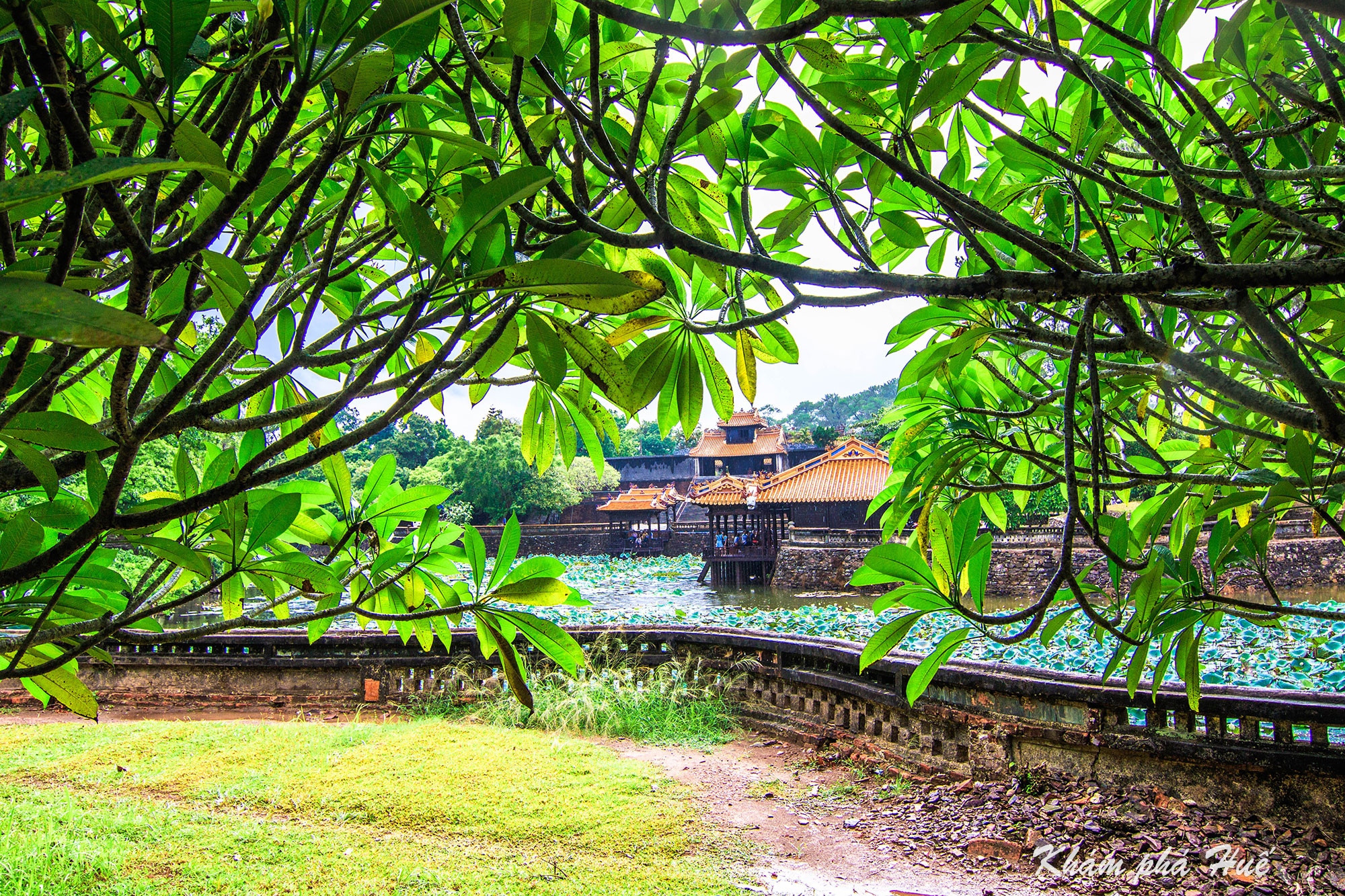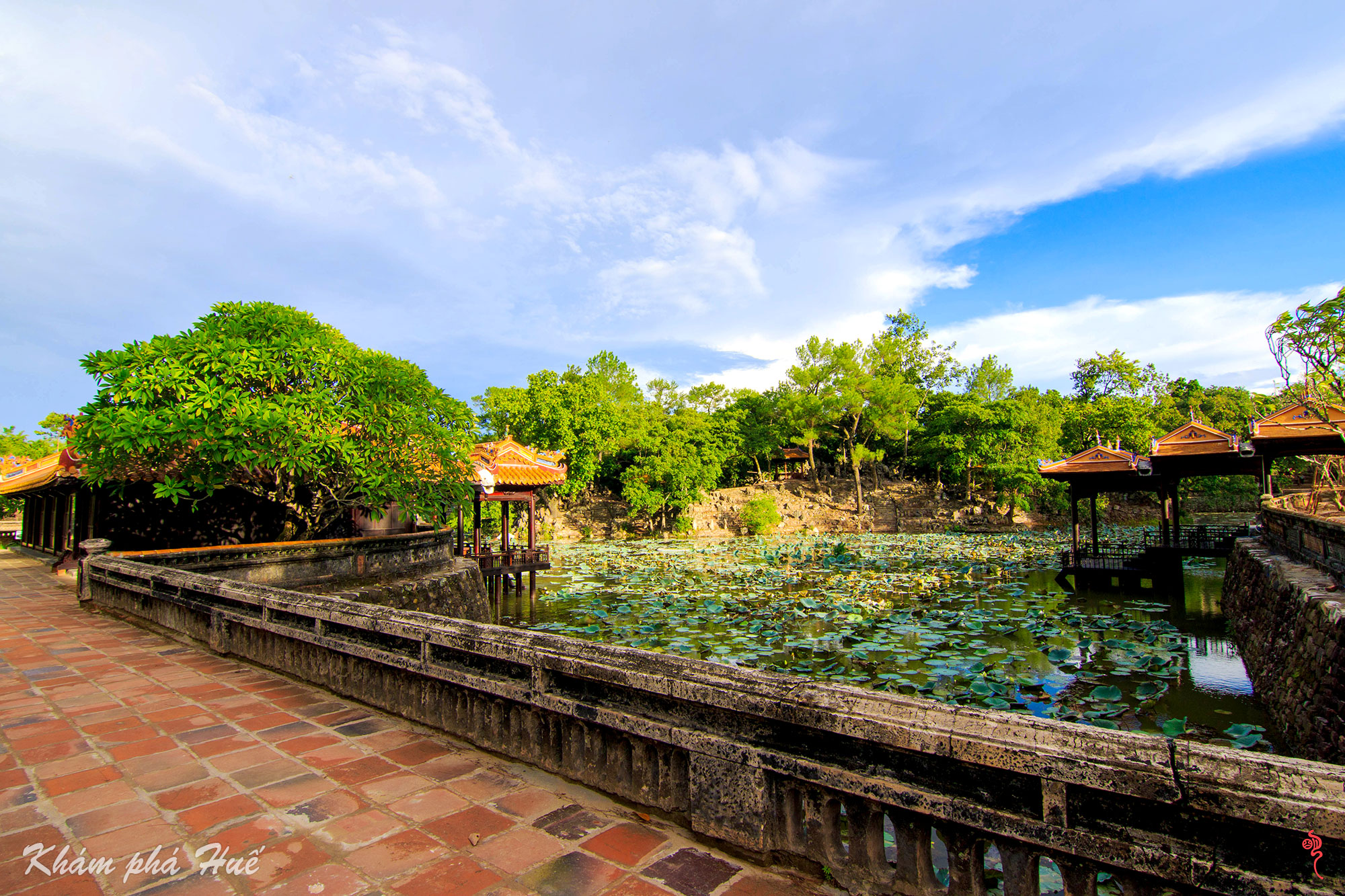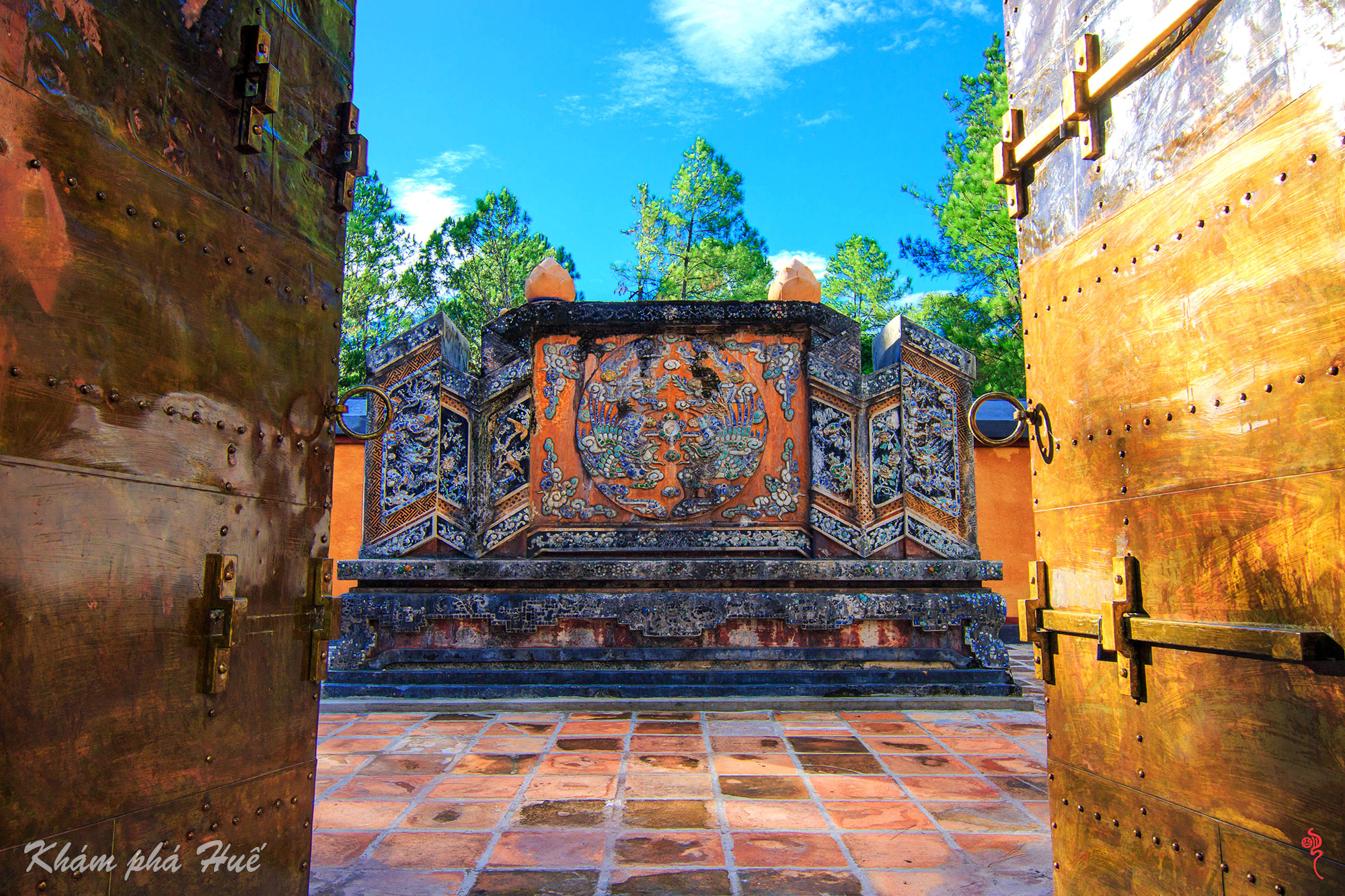Panoramic view of Tu Duc Tomb as a large park. Through Vu Khiem gate, to the Luu Khiem lake area, on the lake, there are Xung Khiem and Du Khiem pavilions, where the Emperor often came to see flowers, write poems and read books.

The layout of the mausoleum consists of two main parts, arranged on two parallel vertical axes, with the same Giang Khiem Mountain in the front, Duong Xuan Mountain in the back, and Luu Khiem Lake in a clear way.
Panoramic view of Tu Duc Tomb as a large park. There are streams flowing all year round, pines ringing, and birds singing. The element that is thoroughly respected in Tu Duc Tomb is the harmony of lines. There are no straight, angular roads like other architectures, instead, there is Bat Trang brick road starting from Vu Khiem gate, passing in front of Khiem Cung gate and winding in front of the mausoleum and suddenly disappearing into the rows of giant porcelain trees near the mausoleum of Empress Le Thien Anh. Human creativity in harmony with the natural landscape creates a poetic and beautiful scene. In the charm of the clouds, and the scent of flowers, people seem to forget that it is the mausoleum of a deceased person but think it is a paradise of plants, poetry, and dreams...

Nearly 50 works in the mausoleum in both the shrine and the mausoleum have the word Khiem in the name. Passing Vu Khiem gate and Son Than shrine, visitors go on the main road leading to the shrine area, which was formerly the Emperor’s resting and entertainment place. At first, Chi Khiem Duong was on the left, where the king's wives were worshiped. Next are 3 rows of Thanh stone steps leading to Khiem Cung gate - a two-storey building in the form of a gazebo as the first confrontation with Luu Khiem lake in front. Luu Khiem Lake was originally a small stream flowing in the mausoleum area, which was dug wide into a lake. It is a "clear path" factor to "gather water", "accumulate happiness", and at the same time a place to drop lotus flowers to create scenes. In the middle of the lake is Tinh Khiem Island with flower plots and small caves for raising rare animals. On Luu Khiem Lake, there are Chong Khiem and Du Khiem pavilions, where the king came to see flowers, write poems, read books...

Inside Khiem Cung gate is an area for the king to rest when he comes here. In the middle is Hoa Khiem palace where the king used to work, now is the place to worship the king and queen's tablets. On the left and right sides are Phap Khiem Vu and Le Khiem Vu for the mandarins to serve. After Hoa Khiem Palace is Luong Khiem Palace, formerly the resting place of the king, later used to worship the spirit of Mrs. Tu Du, mother of Emperor Tu Duc. To the right of Luong Khiem Palace is On Khiem Pavilion - the place to store royal belongings. In particular, on the left side of Luong Khiem palace, there is Minh Khiem Theater for the king to watch plays, which is considered one of the oldest theaters in Vietnam still in existence. There is a corridor